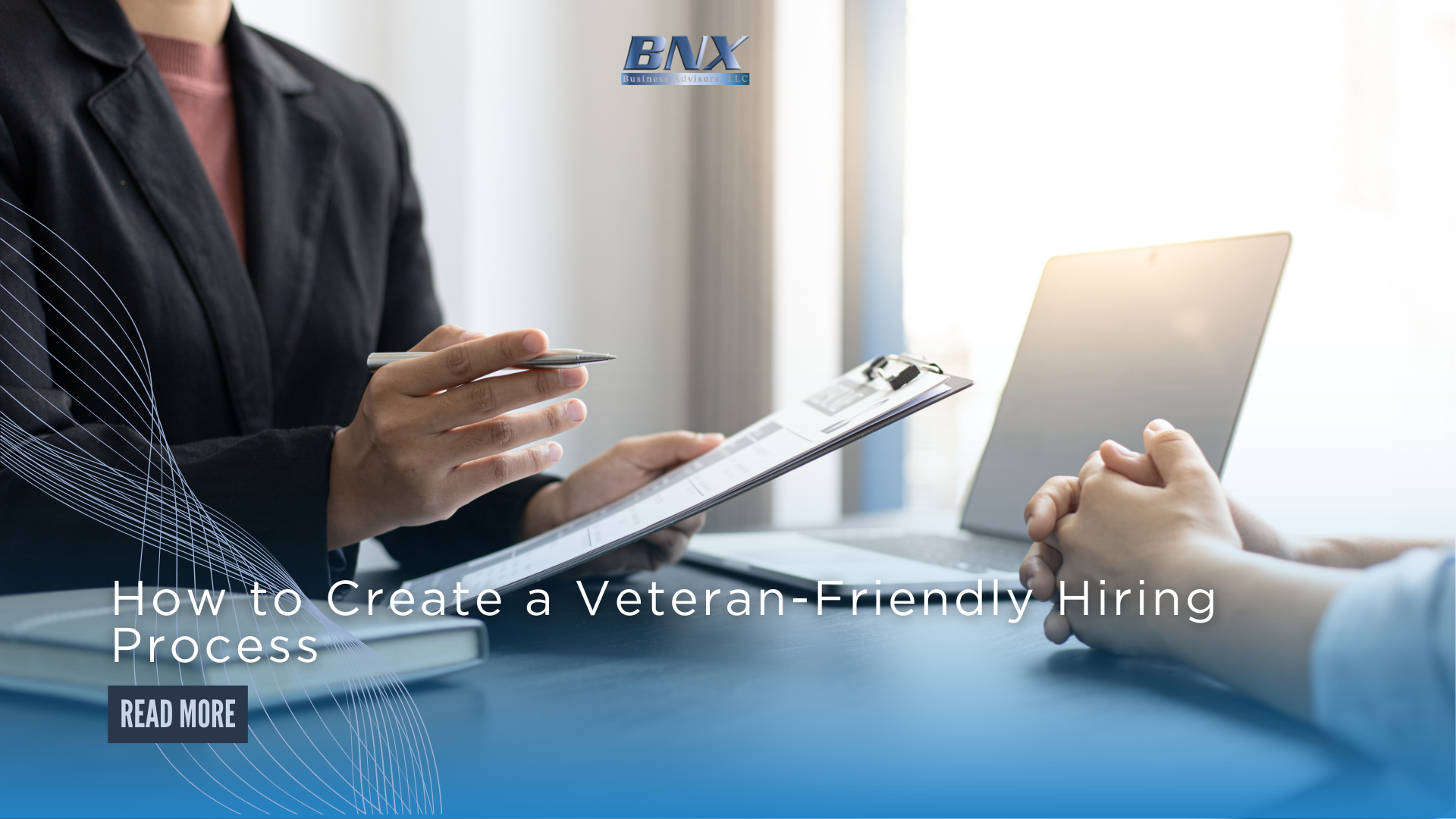

Table of Contents
How to Create a Successful Veteran Hiring Process in Your Organization
One of the most impactful initiatives you can undertake is creating a sustainable veteran hiring process. As C-suite executives, your leadership shapes not only the strategic direction of your organization but also its culture and values. This not only honors those who have served but also taps into a rich talent pool that can bring invaluable skills and perspectives to your organization. In this blog, we’ll explore actionable steps to design a hiring process that effectively attracts, engages, and retains veteran talent.
1. Understand the Value Veterans Bring
Before you can create a veteran-friendly hiring process, it’s essential to recognize the unique skills and experiences that veterans offer. They bring:
- Leadership and Teamwork: Trained to lead diverse teams and collaborate effectively.
- Problem-Solving Skills: Experience in critical thinking and adaptability in high-pressure situations.
- Technical Proficiency: Expertise in various fields, often gained through specialized military training.
- Strong Work Ethic: A commitment to duty and accountability.
Fostering an appreciation for these attributes among your hiring team can lay the groundwork for a more inclusive recruitment process.
2. Revise Job Descriptions
Crafting job descriptions that resonate with veterans is a crucial first step. Consider the following in your veteran hiring process:
- Translate Military Terms: Use civilian-friendly language and avoid jargon that may not be familiar to veterans. For example, instead of “strategic operations,” consider “project management.”
- Highlight Transferable Skills: Emphasize the skills that veterans can bring to the role, such as leadership, teamwork, and adaptability. Make it clear that you value their military experience and its relevance to the position.
3. Train Your Hiring Team
A veteran hiring process starts with well-informed hiring managers and recruiters. Implement training sessions that cover:
- Military Culture: Educate your team about military life, including common challenges veterans face during their transition to civilian careers.
- Bias Awareness: Address unconscious biases that may affect perceptions of veterans. Encourage hiring managers to evaluate candidates based on skills and potential rather than preconceived notions.
4. Build Partnerships with Veteran Organizations
Establishing relationships with local and national veteran organizations can help you access a wider talent pool. Consider:
- Job Fairs and Networking Events: Participate in veteran job fairs and community events to connect directly with potential candidates.
- Mentorship Programs: Collaborate with organizations that offer mentorship for veterans, providing them with resources and connections in the corporate world.
5. Create a Supportive Application Process
Make your application process as accessible and supportive as possible for veterans, this will make your veteran hiring process flow smoothly:
- Simplify the Application: Avoid lengthy applications and unnecessary requirements. Focus on key qualifications and allow for a straightforward application process.
- Veteran-Specific Resources: Provide resources or FAQs specifically tailored for veterans, including guidance on how their military experience translates to civilian roles.
6. Implement a Structured Interview Process
Ensure that your interview process is designed to fairly evaluate veteran candidates:
- Behavioral Interviewing: Use behavioral interview techniques to assess how candidates have applied their skills in real-life scenarios. This approach helps highlight transferable experiences.
- Inclusive Interview Panels: Include veterans or individuals knowledgeable about military culture on your interview panels. This can create a more comfortable environment for veteran candidates during the veteran hiring process.
7. Foster a Veteran-Friendly Workplace Culture
Once hired, veterans need to feel welcomed and valued within your organization. Consider the following strategies:
- Employee Resource Groups (ERGs): Establish veteran-focused ERGs to create a sense of community and provide support for veteran employees.
- Onboarding Programs: Develop onboarding processes that acknowledge the unique backgrounds of veterans and offer tailored support to help them acclimate to the corporate environment.
8. Monitor and Evaluate Your Hiring Practices
To ensure the effectiveness of your veteran hiring process, regularly assess your practices:
- Feedback Mechanisms: Solicit feedback from veteran employees about their hiring experience and ongoing support within the organization.
- Diversity Metrics: Track the hiring and retention rates of veterans to identify areas for improvement and celebrate successes.
Conclusion
Creating a veteran-friendly hiring process is not only a testament to your organization’s commitment to honoring those who have served but also a strategic move to enhance your workforce. By implementing these actionable steps, you can attract and retain veteran talent, leveraging their unique skills and experiences to drive organizational success.
As C-suite executives, the responsibility lies with you to champion this initiative and foster a culture that values inclusivity, diversity, and the rich contributions of veterans. Embrace this opportunity to make a lasting impact on your organization and the lives of those who have dedicated themselves to serving our country.
📌 If you need to know more, you can contact us directly and visit our website
Email: YaraB@BNXBA.com
Website: www.BNXFinancial.com
